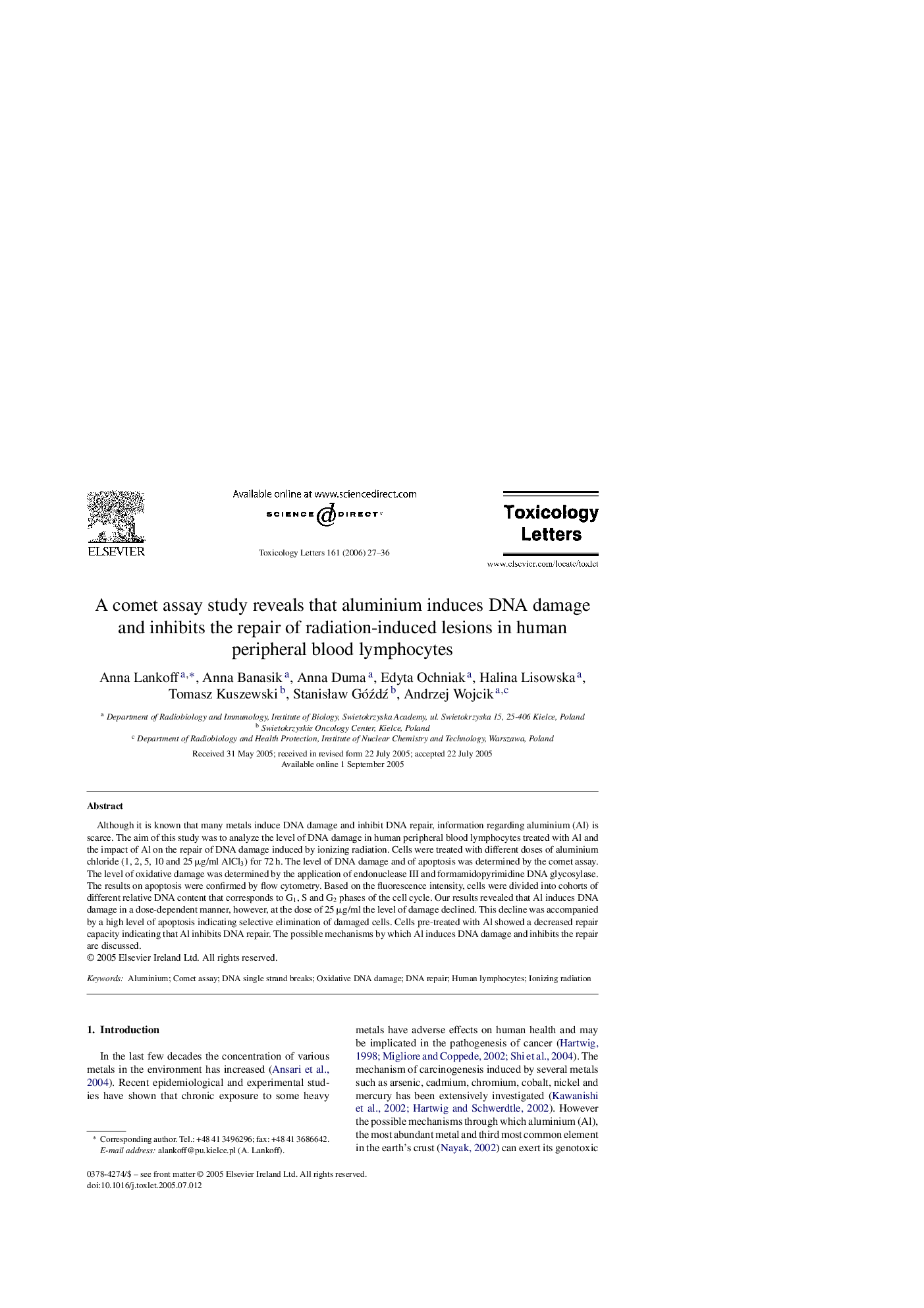| Article ID | Journal | Published Year | Pages | File Type |
|---|---|---|---|---|
| 2601465 | Toxicology Letters | 2006 | 10 Pages |
Although it is known that many metals induce DNA damage and inhibit DNA repair, information regarding aluminium (Al) is scarce. The aim of this study was to analyze the level of DNA damage in human peripheral blood lymphocytes treated with Al and the impact of Al on the repair of DNA damage induced by ionizing radiation. Cells were treated with different doses of aluminium chloride (1, 2, 5, 10 and 25 μg/ml AlCl3) for 72 h. The level of DNA damage and of apoptosis was determined by the comet assay. The level of oxidative damage was determined by the application of endonuclease III and formamidopyrimidine DNA glycosylase. The results on apoptosis were confirmed by flow cytometry. Based on the fluorescence intensity, cells were divided into cohorts of different relative DNA content that corresponds to G1, S and G2 phases of the cell cycle. Our results revealed that Al induces DNA damage in a dose-dependent manner, however, at the dose of 25 μg/ml the level of damage declined. This decline was accompanied by a high level of apoptosis indicating selective elimination of damaged cells. Cells pre-treated with Al showed a decreased repair capacity indicating that Al inhibits DNA repair. The possible mechanisms by which Al induces DNA damage and inhibits the repair are discussed.
